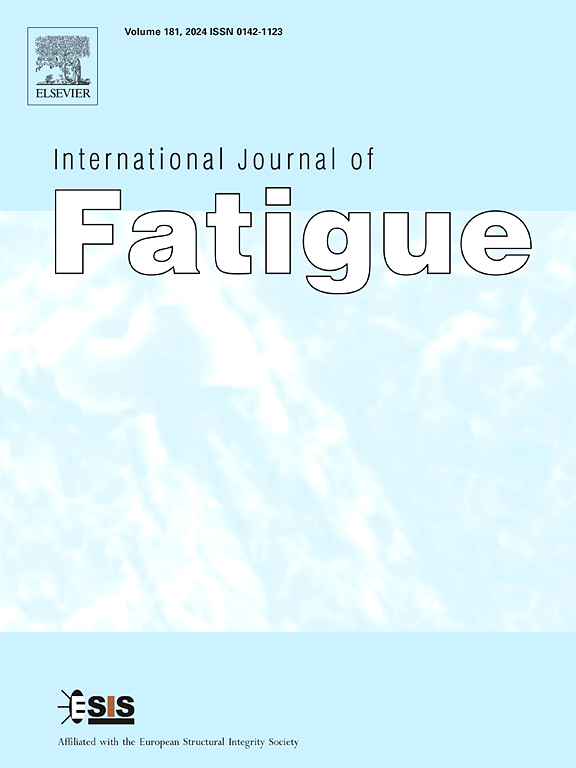Fatigue life prediction and optimization of two-stage stiffness leaf spring with ANN
IF 5.7
2区 材料科学
Q1 ENGINEERING, MECHANICAL
引用次数: 0
Abstract
Fatigue life prediction of leaf springs is critical during the vehicle design stage. Fatigue life calculation based on linear superposition cannot guarantee accuracy, while fatigue life calculation based on direct transient analysis is extremely time-consuming. This paper aims to assess the fatigue life of two-stage stiffness leaf springs under random road loads with high accuracy and efficiency. The key to predicting the fatigue life of two-stage stiffness leaf springs is to calculate the full-field stress-time history based on artificial neural networks (ANN) and finite element analysis (FEA). Road loads were measured using a road test, and multi-body simulation (MBS) was performed to calculate the leaf spring force-time history. Statistical analysis was conducted on the force-time history to generate input for FEA to acquire ANN training data. The ANN was built and trained to calculate the leaf spring stress-time history using the leaf spring force-time history as input. Fatigue life calculations were performed using the stress-time history. The results show that the calculation efficiency of the stress-time history based on ANN is improved by orders of magnitude compared to transient dynamics analysis. Meanwhile, the calculated fatigue life correlates well with the test results, and different loads have different contributions to fatigue damage.
求助全文
约1分钟内获得全文
求助全文
来源期刊

International Journal of Fatigue
工程技术-材料科学:综合
CiteScore
10.70
自引率
21.70%
发文量
619
审稿时长
58 days
期刊介绍:
Typical subjects discussed in International Journal of Fatigue address:
Novel fatigue testing and characterization methods (new kinds of fatigue tests, critical evaluation of existing methods, in situ measurement of fatigue degradation, non-contact field measurements)
Multiaxial fatigue and complex loading effects of materials and structures, exploring state-of-the-art concepts in degradation under cyclic loading
Fatigue in the very high cycle regime, including failure mode transitions from surface to subsurface, effects of surface treatment, processing, and loading conditions
Modeling (including degradation processes and related driving forces, multiscale/multi-resolution methods, computational hierarchical and concurrent methods for coupled component and material responses, novel methods for notch root analysis, fracture mechanics, damage mechanics, crack growth kinetics, life prediction and durability, and prediction of stochastic fatigue behavior reflecting microstructure and service conditions)
Models for early stages of fatigue crack formation and growth that explicitly consider microstructure and relevant materials science aspects
Understanding the influence or manufacturing and processing route on fatigue degradation, and embedding this understanding in more predictive schemes for mitigation and design against fatigue
Prognosis and damage state awareness (including sensors, monitoring, methodology, interactive control, accelerated methods, data interpretation)
Applications of technologies associated with fatigue and their implications for structural integrity and reliability. This includes issues related to design, operation and maintenance, i.e., life cycle engineering
Smart materials and structures that can sense and mitigate fatigue degradation
Fatigue of devices and structures at small scales, including effects of process route and surfaces/interfaces.
 求助内容:
求助内容: 应助结果提醒方式:
应助结果提醒方式:


